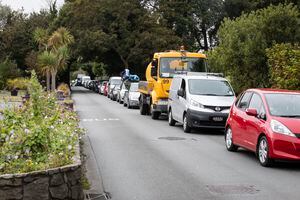Create right environment and island’s future can be green
ALL the ingredients are there when it comes to Guernsey’s approach to the climate crisis.

It’s just that no one has managed to put the recipe together and, until that happens, it looks like we are paying lip-service to the issue at best – which is, sadly, just how some would want it.
Remember all those deputies and officials in May standing in front of school activists and signing up to a pledge to go carbon neutral by 2030?
A great gesture, but there remains a lack of urgency in articulating how serious a commitment that was and what we are doing to get there.
Guernsey energy policy, one of the priorities of this States’ programme, exists only as a ‘statement of intent’.
It is due to come out for debate in the first quarter of 2020 and last for 30 years.
A draft has been consulted on, but the delay in it reaching its final form is both an indicator of the complexity of this work and the viewpoints being expressed on it.
The road to carbon neutrality for individuals will be driven by the advancement, desirability and affordability of different technology as well as changing lifestyles.
Each year, Guernsey publishes a greenhouse gas bulletin giving figures for a couple of years previous – it takes a while to crunch those numbers.
They show a very obvious step change between 2000 and 2001 when the cable link to France was first plugged in and increases in years when the link has failed.
By 2017, power generation was contributing about 9% of emissions compared to 26% in 1990.
The link was not created for its environmental benefits, but they are obvious, as it would be when, and if, Guernsey Electricity finally gets the go-ahead to install a direct connection with France.
Looked at in pure emission terms, it would lead to a smoothing out of some of the major spikes when downtime of the current connection occurs.
There are security of supply benefits too.
Waste is another area where there has already been noticeable change, and the move to separate and export will make further inroads – as would moves to generate power from the methane gas being released from Mont Cuet.
In 2017, this category contributed 27% of Guernsey’s emissions, up from 19.4%, but the actual amount measured as kt of CO2 equivalent has been falling since 2008.
With increasing awareness of the rubbish that we produce, of plastics and packaging, of food waste, green waste, this is another area where we are already seeing cultural change that can be built on.
Changing agricultural practices and land use also make a measurable contribution to greenhouse gas emissions – a total of 3.7% in 2017.
While livestock-related emissions have remained steady, they fell with a decrease in the number of cows in 2001 when the milk quota was reduced – land use change has driven an increase in this category.
This shows that controlling emissions is not just about the size of the herd, which may have other environmental benefits through land management, but the policies that dictate land use itself.
One of the rising emissions areas – up from barely nothing in 1990 to 5.6% by the latest figures – is F-gases, which can be released by refrigeration, air conditioning and heat pump systems if they leak or are disposed of improperly.
They are now more polluting than cows, but you hear virtually nothing about them from a policy perspective.
International regulation is focusing on this area, which will naturally feed through to the type of products being used on-island and the impact they have.
Commercial and domestic combustion of fuels for heating and hot water in homes and offices also contribute a substantial amount of the island’s emissions (11.7% of the 2017 total), but total emissions from this sector are down by 40.1% when compared with 1990, having peaked in 1997.
As micro-renewable generation and storage technologies become more affordable, this is another area where downward pressure can be exerted.
It is an area that government could incentivise through its policies too. Feed-in tariffs, insulation and buildings standards all have a role to play if the States is being serious about a green future.
But no plan about a carbon-neutral future can make significant progress without addressing what has grown to be the biggest contribution to emissions – transport.
To put it in perspective, there was almost four times the amount of emissions from transport than power generation in 2017 and it accounts for 32.3% of the total.
While action can be taken on all contributing areas, none will be bigger than addressing this one.
Break it down and 65% of transport emissions resulted from on-island road transport in 2017, with a further 22% from aviation.
There has been a downward trend since a peak in 2000 as technology advances, and it is another area where Guernsey will inherit advances being driven internationally, especially from pledges to shift to electric vehicles.
But there has been very little policy incentive for islanders to do so beyond a few public charging points and lower first registration duty, no equivalent of grants that are available in the UK.
When you dive into the statistics, you see some hope – change has been happening without any real major focus, almost by coincidence.
If we got serious and created the right environment, Guernsey could quickly move towards a greener future.





